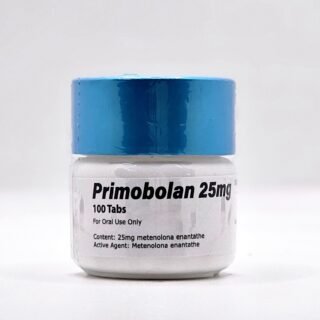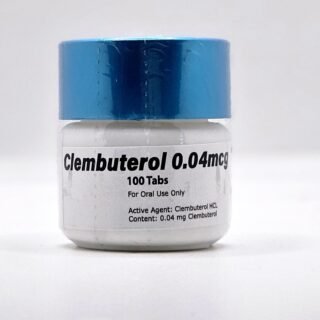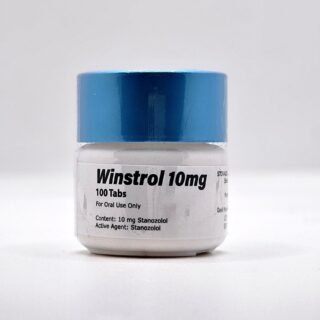Category
- Best Peptides for muscle growth
- Geno Pharma Domestic Warehouse 2 (Canada&USA) (Ships in 1–3 days) Faster!
- GP(Domestic Shipping US) Warehouse 1
- Human Pharma Premium
- Phar Labs Premium-Select
- Steroids on Sale USA, Real Steroids Online
- New arrivals in USA
- Most popular steroids in USA
- Antiestrogens / Gonadotropins
- Bangkok Steroid USA
- Biopharma Steroid USA
- British Dragon
- Anabolic Steroids for Horses
- Fat-burners
- Gen Pharma USA
- Medical Pharma Steroid USA
- Medical Tech Steroid USA
- Novocrine Steroids
- HGH USA
- Omega Labs Steroid USA
- Rotterdam Steroids USA
- SARMs USA
- Sciroxx
- Sydgroup Steroid USA
- Big vetenary Steroid USA
- Watson Steroids
- XT Labs Steroids
Most Popular steroids USA
-
 Primobolan Pills 25mg 100 pills Domestic USA
Primobolan Pills 25mg 100 pills Domestic USA
$99.00Original price was: $99.00.$85.00Current price is: $85.00. -
 Clenbuterol for Sale 40mcg 100 Tabs - GP Premium Domestic USA
Clenbuterol for Sale 40mcg 100 Tabs - GP Premium Domestic USA
$99.00Original price was: $99.00.$65.00Current price is: $65.00. -
 Winstrol Tablets for Sale 10mg 100 pills GP Domestic
Winstrol Tablets for Sale 10mg 100 pills GP Domestic
$99.00Original price was: $99.00.$75.00Current price is: $75.00.


Table of Contents
ToggleHow testosterone affects body fat
By Michael Mooney (July, 2000)
These studies show a clear association with low testosterone and increased fat inside the abdominal (stomach) cavity, and risk of Type II diabetes and cardiovascular disease.
Doctor-prescribed testosterone replacement therapy reduces these potentially critical health problems. (Print this page out and show it to your doctor.)
Thanks to journalist/researcher Will Brink for sending me these studies.
Vermeulen A. Senile hypogonadism in man and hormone replacement therapy. Acta Med Austriaca 2000;27(1):11-17.
Aging is accompanied by a progressive decline of testicular function. Whereas fertility persists until a very old age, endocrine function declines progressively and at age 70 yrs, more than 25% of men have hypogonadal testosterone levels.
This decline in testosterone plays an important role in a series of signs and symptoms that accompany the aging process such as a decline in virility, in libido and sexual activity, muscle mass and strength, decline in bone mass (osteoporosis), an increase in abdominal fat mass and a decrease in the feeling of general well being.
Most of these signs and symptoms have a multifactorial origin, nevertheless, androgen (testosterone) substitution generally improves most of these symptoms, increasing muscle mass and strength, improving libido and sexual activity, decreasing abdominal fat and improving insulin sensitivity as well as the sense of well being, effects which suggest a role of androgen deficiency in their genesis.
Comments: Low testosterone was associated not only with loss of muscle (and bone), but an increase in abdominal fat, which tends to be associated with decreased insulin sensitivity.
Giving testosterone replacement decreased abdominal fat and improved insulin sensitivity.
Bjorntorp P. Metabolic difference between visceral and subcutaneous abdominal fat. Diabetes Metab 2000 Jun;26(3):10-12.

Obesity stands as a public health issue. Obesity prevalence is increasing throughout every industrialized country. Android obesity is linked with an increased cardiovascular mortality and with type 2 diabetes mellitis, thus calling for an early management of this disease.
Several studies showed a significant association between an android fat distribution and an increased cortisol secretion, raising the still debated question of a causal relationship between the development of android obesity and hypercorticism. Morevoer, android obese subjects exhibit reduced plasma testosterone and growth hormone levels, meaning complex hormonal abnormalities in these subjects.
Current hypotheses suggest that android fat distribution depends on the association of these hormonal abnormalities. Android obese patients have supranormal free fatty acid plasma concentrations. Visceral fat tissue, through its portal drainage, could be an important source for free fatty acids that may exert complex metabolic effects: involvement in hepatic lipogenesis, increase in hepatic neoglucogenic flux, reduction in insulin metabolic clearance and involvement in peripheral insulin resistance through a competition mechanism described by Randle.
Technics in vitro (isolated adipocytes) and in vivo in human (labelled fatty acid flux) showed that visceral fatty acid flux was increased in obese patients and subcutaneous adipose tissue, as opposed to common opinion, was also involved in free fatty acid pool in obese patients.
Thus, visceral obesity and diabetes could be linked through an enhanced fatty acid availability from adipose tissues (visceral and subcutaneous) in otherwise genetically type 2 diabetes-prone individuals.
Comments: Android fat distribution, which means more fat inside the stomach cavity, was associated with low testosterone and growth hormone, and increased cortisol. (Elevated levels of cortisol, a stress hormone, tend to decrease testosterone production.)
These hormones have complex interactions (that also involve insulin) that affect fatty acid movement into and out of fat cells.
Tsai EC, et al. Low serum testosterone level as a predictor of increased visceral fat in Japanese-American men. Int J Obes Relat Metab Disord 2000 Apr;24(4):485-91
OBJECTIVE: To examine the association between baseline testosterone levels and changes in visceral adiposity in Japanese-American men. DESIGN: Prospective observational study.
SUBJECTS: Second-generation Japanese-American males enrolled in a community-based population study. MEASUREMENTS: At baseline, 110 men received a 75g oral glucose tolerance test (OGTT), and an assessment of body mass index (BMI); visceral adiposity measured as intra-abdominal fat area (IAF) using computed tomography (CT); fasting insulin and C-peptide levels; and total testosterone levels. IAF was re-measured after 7.5 y. Subcutaneous fat areas were also measured by CT in the abdomen, thorax and thigh. The total fat (TF) was calculated as the sum of IAF and total subcutaneous fat areas (SCF). RESULTS: After 7.5y, IAF increased by a mean of 8.0 cm2 (95% CI: 0.8, 15.3). Baseline total testosterone was significantly correlated with change in IAF (r= -0.26, P= 0.006), but not to any appreciable degree with change in BMI, TF, or SCF. In a linear regression model with change in IAF as the dependent variable, baseline testosterone was significantly related to this outcome while adjusting for baseline IAF, SCF, BMI, age, diabetes mellitus status (OGTT by the WHO diagnostic criteria) and fasting C-peptide (regression coefficient for baseline testosterone [nmol/l] = -107.13, P = 0.003). CONCLUSIONS: In this Japanese-American male cohort, lower baseline total testosterone independently predicts an increase in IAF. This would suggest that by predisposing to an increase in visceral adiposity, low levels of testosterone may increase the risk of type 2 diabetes mellitus.
Comments: Low testosterone level was correlated with more fat inside the abdominal cavity, which is associated with increased risk of Type II diabetes (and cardiovascular disease).
Vermeulen A, et al. Testosterone, body composition and aging. J Endocrinol Invest 1999;22(5 Suppl):110-116.
In addition to growth hormone (GH), sex hormones are important determinants of body composition. Aging is accompanied by a decrease in free testosterone levels and, as BMI as well as fat mass increase with age (with a redistribution of body fat), whereas muscle mass decreases, it is tempting to attribute a causal role to the decrease in androgen levels.
In our study involving 372 males aged >20-85, age was found to be positively correlated with BMI and fat mass as measured by impedance, and negatively correlated with levels of free testosterone and free insulin-like growth factor-I.
Multiple regression analysis revealed that BMI and age were independent determinants of testosterone levels. The latter decreased from 598+/-188 (SD) ng/dl in the young controls to 453+/-161 ng/dl in the elderly group, free testosterone decreasing from 15.35+/-4.10 to 8.38+/-2.51 ng/dl. Fat-free mass decreased by 18.9%. In a subgroup of 57 men aged 70-80 years, testosterone levels correlated negatively with percentage body fat (r=-0.57), abdominal fat (r=-0.56) and plasma insulin levels (r=-0.40). As GH levels and pulsatility also decrease with age and as, moreover, androgens amplify endogenous secretion of GH, it is not easy to determine the relative role of androgen deficiency in the age-associated changes in body composition.
Moreover, increase in fat mass (obesity), as occurs in aging males, is in itself associated with low levels of free testosterone and GH which both normalize after weight reduction. The role of testosterone in the age-associated changes in body composition is, however, further suggested by the increase in lean body mass and in mid-arm circumference and the decrease in waist-to-hip ratio observed after testosterone treatment of elderly men with decreased testosterone levels.
Also in healthy eugonadal men, testosterone treatment, at least in supraphysiological doses, causes an important increase in fat-free mass (+/-10%) and in muscle size. The changes in muscle volume are associated with an increase in muscle fibre diameter, suggesting that testosterone induces muscle cell hypertrophy.
In conclusion, aging in males is accompanied by an important increase in fat mass and a decrease in lean body mass. Several indices of body composition are significantly correlated with plasma testosterone levels before and after correction for BMI and age. It is evident, however, that in addition to testosterone levels, the age-associated somatopause is also a determinant of the changes in body composition.
Comments: Providing testosterone replacement to men with low testosterone is again associated with decreased fat and increased muscle.
Share this page:
- Click to share on X (Opens in new window) X
- Click to share on Facebook (Opens in new window) Facebook
- Click to email a link to a friend (Opens in new window) Email
- Click to share on LinkedIn (Opens in new window) LinkedIn
- Click to share on Reddit (Opens in new window) Reddit
- Click to share on Pinterest (Opens in new window) Pinterest
- Click to share on Telegram (Opens in new window) Telegram
- Click to share on WhatsApp (Opens in new window) WhatsApp
- Click to share on Tumblr (Opens in new window) Tumblr
Written by Steroids USA
Pay with WISE APP or Remitly
Pay with WISE App or Remitly
Fast money transfers from USA for fast delivery of steroids
Secure delivery in USA
100% reliable shipping in USA
24x7 Support
Online 24 hours
Low cost delivery
Great shipping prices in USA
BULK ORDER DISCOUNT
If you are a reseller in the USA you can get a special DISCOUNT, we can give you up to 50% or more on bulk orders. If you want to make a bulk order, we can negociate for orders of over USD$4,000, contact us by email.
Steroids info






